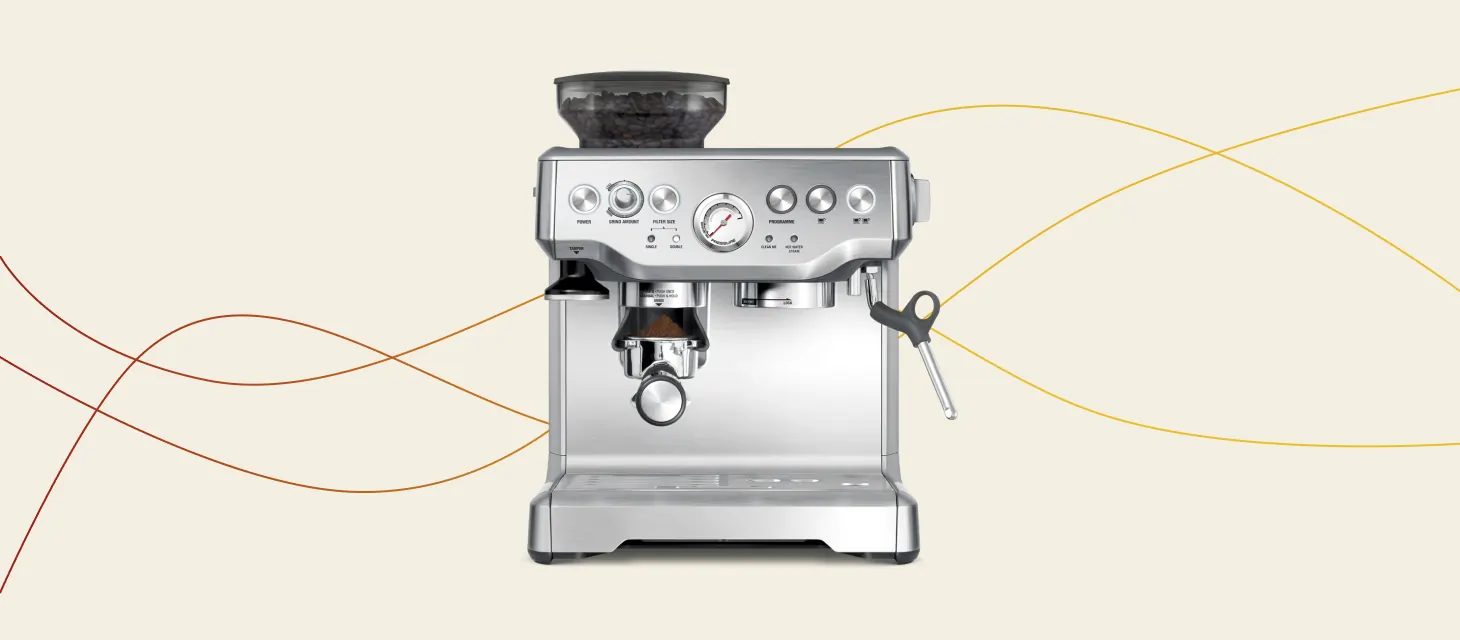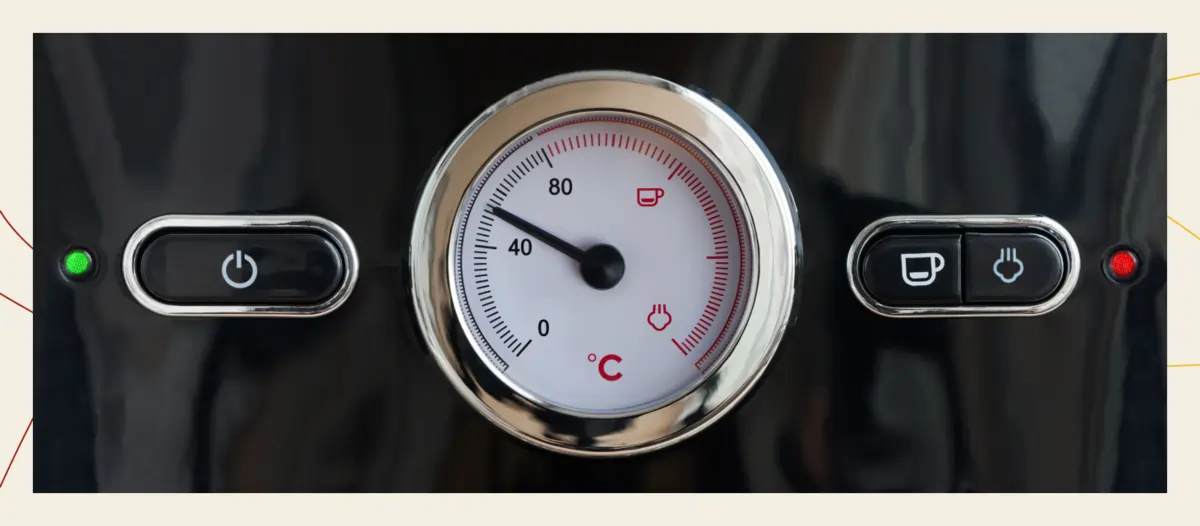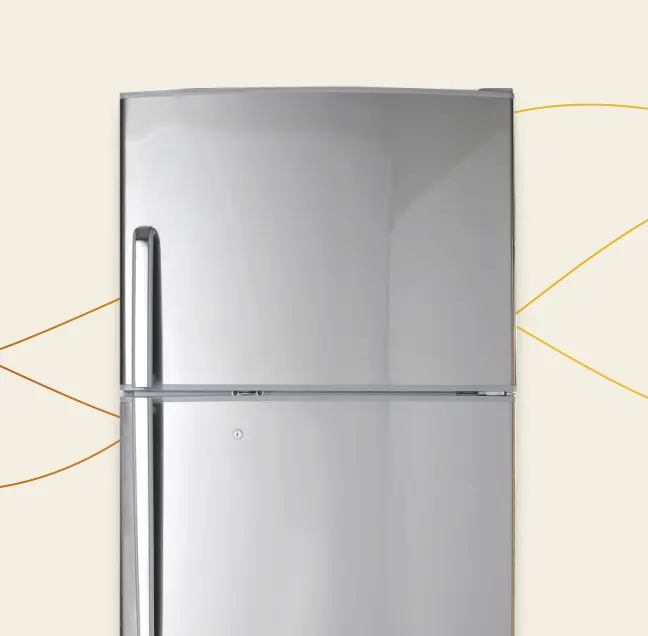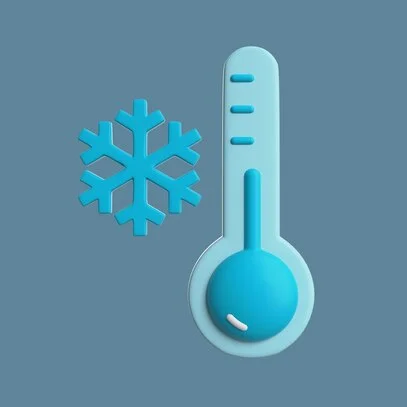
When your Sage coffee machine gets faulty, it can take you aback. To make things easier, we created a guide on Sage coffee machine common faults. The guide is based on the interview with Sage repair engineers regarding the problems they tackle most frequently for Sage Bambino, Sage Bambino Plus, Sage Barista Touch, Sage Barista Pro, and Sage Barista Express.
In short, the top range of sage coffee machine problems include issues with brewing, milk frothing, leaking, and the pressure gauge. Sage coffee machine owners often get frustrated when seeing their Sage flashing lights. However, this is not a fault in general, but a hint that it is high time to undertake its maintenance.
Table of contents
Water not coming through (low or no pressure)

If water is coming through the empty portafilter but not coming through the filled basket, it means your Sage coffee machine operates at low or no pressure. Typically, there could be one of the following issues:
- Faulty pump
- Faulty solenoid valve
- Scale-blocked solenoid valve nozzle
- Poor sealing of the water tubes (deteriorated O-ring)
Troubleshooting tips
First, run a self-cleaning cycle and back flush to descale the solenoid valve nozzle of your Sage. If this doesn’t help, inspect your Sage inside. If you notice some bubbles in the water tubes, the issues lie in poor sealing. In this case, you need to replace the O-ring.
If it is the faulty solenoid to blame or your coffee machine is not pumping water due to the faulty pump, you need to replace the defective element. Except descaling, we recommend entrusting the repair work to experts and find a reliable engineering company that provides Sage repairs.
Water not coming through the group head but the other way
Rare but still occurring issue is about Sage coffee machine water not coming through the group head but filling the drip tray. Typically, the most common issue here is problems with energizing/de-energizing the solenoid valve. So that it can’t open to lead water the right way. The cause here may differ from power supply issues to the faulty printed circuit board.
Troubleshooting tips
This is a complicated problem. To fix it, we recommend turning to a company that provides professional Sage repair.
The steam wand is not working

The issue with the Sage coffee machine steam wand that is not working is one of the most common. Though, the result is the same, not frothing, there could be different problems involved:
- Steam wand blocked with milk or scale buildups
- Low water level in the steam boiler tank
- Insufficient heating of the steam boiler
- Faulty or stuck steam wand valve
In the first case, steam simply can’t get out of the steamer. In the other cases, your Sage couldn’t deliver sufficient steam pressure.
Troubleshooting tips
The first (and the easiest) thing to do is to check the water level in your Sage steam boiler and refill it up to the right level.
If the water level is already ok, clean the milk frother wand to get rid of milk or scale buildups. For this, apply recommended cleaning pills and even mechanical cleaning, if necessary. The goal here is to make the steamer nozzle clean both outside and inside, so the steam can easily flow out of it.
To fix the insufficiently heating steam boiler or replace the steam wand valve, look for coffee machine repair in London or another area you reside in.
Steam coming out of the wrong place
Sometimes the customers face Sage coffee machine steam coming of wrong place – not out of the steam wand but out of the group head. Typically, such a problem arises if the solenoid stays always open to transfer the steam to the group head. Sometimes, this can be a valve blockage. However, in most cases, this is not the solenoid but the printed circuit board (PCB) to blame.
Troubleshooting tips
To exclude the valve blockage, arrange backflush and descale your coffee machine. If this doesn’t help, the PCB is to blame, which requires expert assistance.
Coffee machine is leaking
Sometimes, Sage coffee machine begins leaking. There can be at least two types of problems:
- Dripping in a stay mode or after delivering the shot
- Leaking while working and brewing
In both cases, there could be the following causes to blame:
- Faulty O-ring
- Blocked 3-way solenoid brew valve (not closing tightly)
- Faulty solenoid (damaged group head-leading nozzle and improper sealing)
Troubleshooting tips
The first thing to attempt is to backflush your Sage to clean the blocked solenoid. If this doesn’t help, inspect the group head sealing and replace the O-ring, if necessary.
If no of these helps, it is the faulty solenoid to blame, and you need to replace with it the old one. It is possible to replace the solenoid as a DIY troubleshooting. However, if you feel uncertain, turn to a pro.
The pressure gauge is not working

If needle of the gauge does not move while brewing but water comes through the group head, it may indicate that the pressure gauge is broken. However, the still needle is not always about the gauge breakage. You may also notice such an effect in one of the following cases:
- Old beans
- Coarse ground
- Poor tamping
- Too little dosing
Troubleshooting tips
First, make sure that little dosing, poor tamping, old beans, and too coarse ground coffee is not your case. Use fresh coffee beans, grind them finely, tamp coffee up to the tight pressure, or increase dosing.
If the needle still doesn’t move when brewing, your Sage pressure gauge is broken and needs replacement. Sage gauge replacement is a complicated task. So, it is better to turn to a Sage expert.
The pressure gauge is condensing
If you notice drops of water inside your Sage pressure gauge (even the smallest), the gauge condensing. Typically, the cause of the issue here is the loosened capillary tube. To clarify, the loosened tube results in insufficient sealing and water gets through the capillary tube inside the gauge. Another case here may be a poorly sealed gauge itself.
Troubleshooting tips
To get rid of the condensate, drain your Sage water tank, unplug your coffee machine, and leave it so overnight (or, sometimes, a day) in a dry place. To prevent the issue, tighten the capillary tubs slightly.
If you feel unsure of your DIY tightening success, contact a professional engineer. If the pressure gauge has got poor sealing itself, contact an engineer to seal it properly or replace it.
Conclusion
So, now you are familiar with the most common Sage coffee machine problems and solutions. Note, this guide is for the informative purposes only . With all the issues, we recommend turning to a coffee machine repair engineer for expert advice and assistance.
And yes, as you could notice, in many cases, you can avoid faults by backflushing and descaling the unit regularly. So, do not neglect arranging proper maintenance for your Sage!


